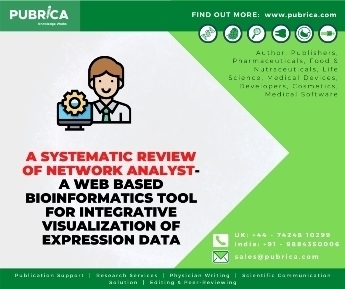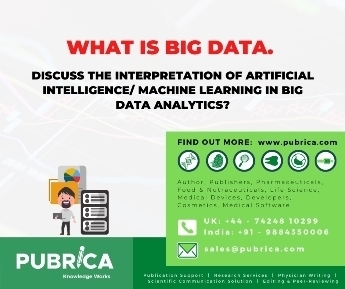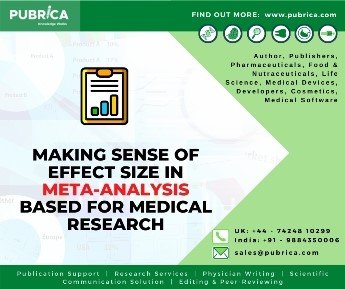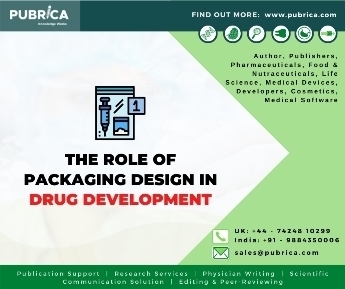
A systematic review of network analyst- a web based bioinformatics tool for integrative visualization of expression data
November 9, 2020
What is big data? Discuss the interpretation of artificial intelligence/ machine learning in big data analytics?
November 13, 2020In-Brief
- The exciting promise of artificial intelligence in healthcare has been widely reported, with potential applications across many different domains of medicine
- This promise has been welcomed as healthcare systems globally struggle to deliver the experience of healthcare, improving the health of populations, decreasing capita costs of healthcare and improving the work-life of healthcare providers
- Pubrica explores the main challenges and limitations of AI in healthcare and considers the steps required to translate these potentially transformative technologies from research to clinical practice.
Introduction
A rapidly increasing number of academic research studies have demonstrated the various applications of AI in healthcare, including algorithms for interpreting chest radiographs detecting cancer in mammograms, etc. Applications have also been shown in pathology identifying cancerous skin lesions diagnosing retinal imaging detecting arrhythmias and even identifying certain diseases from electrocardiograms. Analysis of the volume of data collected from electronic health records offers promise in extracting clinical information and making the diagnosis and providing real-time risk scores for transferring care predicting in-hospital mortality, prolonged length of stay, readmission risk and discharge diagnoses predicting future deterioration. Proof concept studies aimed to improve the clinical workflow, including automatic extraction of semantic information from transcripts, recognizing speech in doctor-patient conversations, predicting the risk of failure to attend hospital appointments, and even summarising doctor-patient consultations. The impressive array of studies, it is perhaps surprising that real-world deployments of machine learning in clinical practice are rare. AI possess a positive impact on many aspects of medicine and can reduce unwarranted variation in clinical practice, improve efficiency and prevent avoidable medical errors that will affect almost every patient during their lifetime in a systematic Review Writing.
Challenges of machine learning in clinical sectors
Dataset shift
Particularly critical for algorithms in EHR, it is easy to ignore that all input data are generated within a non-stationary surrounding with shifting patients, where clinical and operational practices develop using a systematic Review writing Services. The arrival of a new predictive algorithm may produce alterations in routine, resulting in distribution compared to train the algorithm. Methods to analyze drift and update models in response to deteriorating performance are essential. Mitigations to manage this effect include the likely requirement for periodical retraining along with the careful quantification of performance over time to identify problems with systematic review services. Data-driven testing procedures recommend the most appropriate updation method, from easy recalibration to full model retraining, to stabilize performance over time after conducting a systematic review
Achieving robust regulation and rigorous quality control
A fundamental component of achieving safe and effective deployment of artificial intelligence algorithms is the development of the necessary regulatory works. It holds a unique challenge given the current pace of innovation, significant risks involved, and the potentially fluid nature of machine learning models says a systematic review paper. Proactive regulation will provide confidence to clinicians and medical care systems. The Food and Drug Administration(FDA) guidance has to develop a modern regulatory work to make sure that safe and efficient artificial intelligence devices can efficiently provide to patients. It is also essential to consider the regulatory measures of improvements that providers of AI products are likely to develop the entire product life with the help of writing a systematic review. The AI systems will be designed to improve over time, representing a challenge to primary evaluation processes. AI learning is continuous, periodic, and system-wide updates following of clinical significance would be preferred, compared to constant updates that result in drift. Developing the ongoing performance guidelines to calibrate models with human feedback continually will encourage the identification of performance over time.
Human barriers to adopt AI in healthcare
Even with a highly efficient algorithm that all of the above challenges, human barriers to adoption are substantial. it will be essential to maintain a focus on clinical applicability and advance methods for algorithmic interpretability, patient outcomes, and achieve a better understanding of human-computer interactions to ensure that this technology can reach and benefit patients
Developing a better understanding of human and algorithms
The human understanding is limited but growing how humans are affected by algorithms in clinical practice by the FDA approval of computer-aided diagnosis for mammography. The computer-aided diagnosis was found to increase the recall rate without improving outcomes significantly. Excessive alerts are known to result in alert fatigue and shown that humans assisted by AI performed. Techniques to more represent medical knowledge, facilitate improved interaction and provide an explanation with clinicians meaningfully will only enhance this performance. We must continue to gain a better understanding of the evolving relationship between physicians and human-centred AI tools in the live clinical sectors.
Conclusion
Recent advancements in artificial intelligence present a huge opportunity to improve the healthcare sector. The transformation of research techniques to effective clinical destruction shows a new frontier for clinical and machine learning research. The prospective and robust clinical evaluation will be essential to ensure that AI systems are safe. Using clinical performance metrics that measures of technical accuracy to include the effects of AI affects the quality of health care, the variability of healthcare professionals, the productivity of clinical practice, the efficiency and, most importantly, patient outcomes. Independent data that represent future target populations should be curated to enable the comparison of various algorithms says Pubrica with their systematic review writing service.
References
1. Stead, W. W. (2018). Clinical implications and challenges of artificial intelligence and deep learning. Jama, 320(11), 1107-1108.
2. Chen, J. H., & Asch, S. M. (2017). Machine learning and prediction in medicine—beyond the peak of inflated expectations. The New England journal of medicine, 376(26), 2507.
3. Michie, S., Thomas, J., Johnston, M., Mac Aonghusa, P., Shawe-Taylor, J., Kelly, M. P., …& O’Mara-Eves, A. (2017). The Human Behaviour-Change Project: harnessing the power of artificial intelligence and machine learning for evidence synthesis and interpretation. Implementation Science, 12(1), 121.



